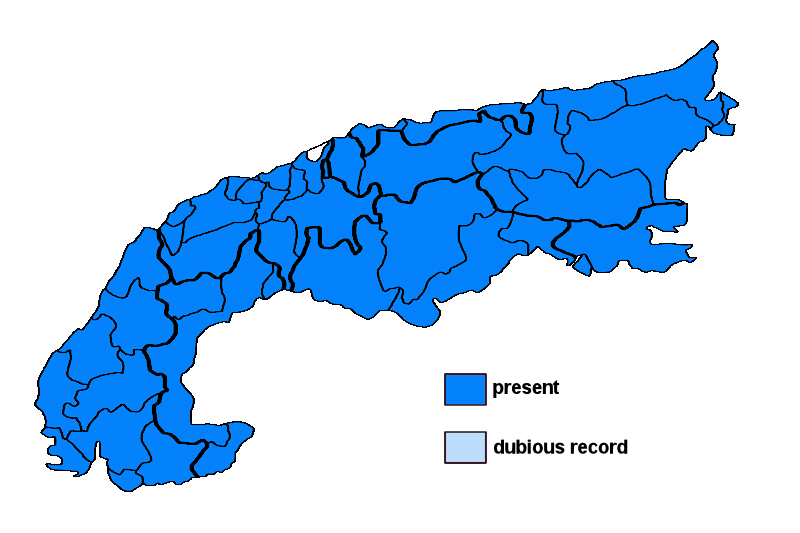Collema flaccidum (Ach.) Ach.
Syn.: Collema rupestre (Sw.) Rabenh., Lathagrium rupestre (Sw.) A. Massal., Lichen flaccidus Ach., Lichen rupestris Sw. nom.illeg., Parmelia flaccida (Ach.) Ach., Synechoblastus flaccidus (Ach.) Körb., Synechoblastus rupestris (Sw.) Trevis.
Lichenised.
Substrate: bark, living mosses, siliceous rocks, intermediate rocks (such as calciferous schists)
Altitudinal range: from the mesomediterranean belt (potential vegetation: evergreen broad-leaved forests dominated by Quercus ilex) to the montane belt (potential vegetation: deciduous forests dominated by Fagus sylvatica and closed coniferous forests with Picea abies)
Note: a mainly temperate to southern boreal-montane lichen with a fragmented holarctic range, found on bark, epilithic mosses, base-rich siliceous and slightly calciferous rocks in sheltered, humid situations; widespread throughout the Alps.
Austria: Vorarlberg; Tirol; Salzburg; Kärnten; Steiermark; Oberösterreich; Niederösterreich (incl. Wien); Burgenland; Germany: Oberbayern; Schwaben; Switzerland: Bern; Fribourg; Glarus; Graubünden; Luzern; St. Gallen; Schwyz; Ticino; Uri; Unterwalden; Vaud; Valais; France: Alpes-de-Haute-Provence; Haute-Alpes; Alpes-Maritimes; Drôme; Isère; Savoie; Haute-Savoie; Vaucluse; Var; Italy: Friuli; Veneto; Trentino Alto Adige; Lombardia; Piemonte; Valle d'Aosta; Liguria; Slovenia: Alpine and Pre-Alpine Slovenia; Trnovsky Gozd; Liechtenstein





